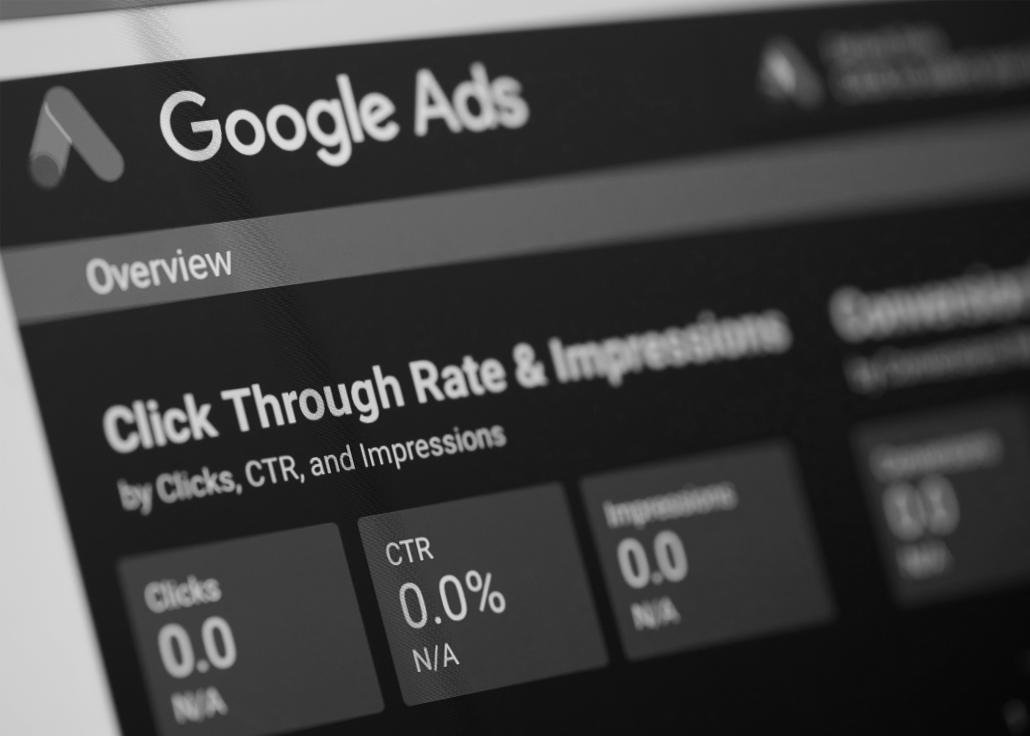
Everything you need to know about lead generation plus 4 key strategies to help you stand out.
On this page we’ll cover:
Saas lead generation refers to all activities and efforts of a software company to increase website visitors in order to collect contact information. Once the company is successful in obtaining contact details, the visitor is considered to be a lead.
Some lead generation activities include; advertising, content creation, referral incentives, or even direct outreach to potential customers. But any marketing effort focused on getting a potential customer’s contact information is considered lead generation.
There are many options available for lead generation. All with potential. The tricky question is identifying what strategies and tactics will be most effective. Your software is unique. And so are your customers! Not every lead generation strategy will be a good fit.
The secret to effective SaaS lead generation lies in understanding your customer, their needs and experience, and your ability to meet them where they are.

In this section we’ll discuss the steps needed to lay the groundwork for a successful lead generation strategy:
Step one is to understand your customer’s specific needs. Consider the following questions. What pain is my customer facing? What solutions are they looking for? What is their ultimate goal?
Identifying the pain of your customer gives you perspective into how they think and what they need. Consider the questions they are asking themselves and ask those questions.
For a B2C customer, you may ask something like, “Are they struggling with their budget?” “Do they find themselves living paycheck to paycheck?” “How does this problem affect their everyday life?” Whereas for a B2B customer you’d ask, “What is lacking in their business?” “How does this affect their company?” “What will ultimately happen if they don’t fix this issue?”
Once you have a clear understanding of their problem, you can more effectively choose the messaging and strategy that will best match their thoughts, wants, and decision process.
Once you understand your customer’s problem, it’s time to consider what solutions they will be thinking about. Put yourself in their shoes and see the path they might take. You already know their decision making process, so where are they in that process? Have they decided what to look for to fill their need? What is it that will solve their problem?
The solutions they’re thinking of and comparing are an integral part of their purchasing process, and this is where you come in. This is the point where your brand, your software, is presented to them as a potential solution.
Now that you understand what your customers need and what they’re looking for, you need to present yourself in a way that will answer their questions, solve their pain, and make it easy for them to choose you. To do this, you must understand how your software can meet the customer’s needs.
If you have a budgeting app, your customer needs software that helps them stop spending more than they want to, so consider how your SaaS actually accomplishes this. They need a way to track their spending, figure out which expenses are unnecessary, and measure their success as they start saving money.
The tools they need are all there in your SaaS product, so tie each solution to a question they’re asking. This provides a fantastic outline of your messaging and identifies how you can best communicate to your customers that you have what they need.
You now understand your customer’s needs and how you can meet those needs. Now it’s time to decide on a marketing strategy. To decide on your Saas marketing strategy, there are 2 major elements to consider: targeted messaging and data-driven decisions.
Because of the sheer amount of competition, it is imperative in the SaaS industry to make sure your marketing strategy and efforts are targeted as narrowly as possible. By identifying your customer needs, you’ve already done half the work. The rest is identifying who your ideal customer is and getting hyper-personalized in your targeting.
Use those insights to narrow down your audience to the people who will truly benefit from your SaaS and target your content directly to your ideal customers. The easiest way to direct your marketing is through data-driven decision making.
Make marketing decisions based on data and not feelings. Data and analytics should be the driving force behind your entire marketing strategy. The numbers will tell you exactly where your current customers are finding you and how they choose to engage with your brand. By tracking the behavior of your website visitors, social media followers, and current customers, you can make the best decisions about allocating your marketing resources.
Use analytics tools to track traffic and conversions to identify which marketing activities generate the most leads and customers. Remember, the goal of your marketing isn’t to bring in a large flow of traffic, it’s to generate leads for your business. Quality will always beat quantity.
It’s also useful to use data to identify where potential customers are spending the most time. If you can take your efforts directly to clients who are actively searching for the solutions you offer, doesn’t it make sense to go to them?
Now that you’ve identified who your customers are and what they are already doing, choose a marketing strategy that matches their behaviors and connects with them as directly as possible. We’ve identified 4 strategies that are proven to increase SaaS lead generation.
You now understand your customer’s needs and how you can meet those needs. Now it’s time to decide on a marketing strategy. To decide on your Saas marketing strategy, there are 2 major elements to consider: targeted messaging and data-driven decisions.

There are a plethora of marketing strategies to choose from when considering your SaaS lead generation, and it can be overwhelming to comb through them all and try to figure out what will work best. We’ve identified, through our experience and research, 4 strategies that we recommend you implement into your plans.
Content marketing is creating and sharing online material (videos, blogs, and social media posts) that doesn’t explicitly promote your brand but is intended to generate interest in your SaaS. It is all about providing entertainment, value, or information to your audience.
Content you can use include product reviews, guides, reports, and “how to” videos. Customers should find some intrinsic value in the content itself. It keeps them coming back and establishes you as an authority they can trust.
Here are 4 steps to help you develop a content marketing strategy that works:
Content marketing is a great way to set yourself apart from the competition, address the needs of different types of customers, and develop your reputation.
The second strategy is using Google search ads on relevant keywords to appear in front of relevant audiences and capture lead information. Even though the platform can be complicated, Google ads are still used by top SaaS companies like Salesforce, Hubspot, and Atlassian, so it’s safe to say that it is an effective tool to have in your own SaaS marketing plan.
Google ads is a complex advertising platform that requires strategy and finesse to create the best results. Here are 3 tips that will help you get high-quality marketing and sales leads from your google ads campaign.
Ad copy is the written message of your ad. When you’re writing copy, consider a user’s needs and be as specific as possible to capture their attention and show them the answer they’re looking for. Use these tactics to make that process simple:
Hand in hand with compelling copy, using messaging that will immediately communicate your value add to potential leads is key to ensuring search ad success, especially in the SaaS industry. Here are a few tactics to help you:
In all of your ads, clearly and concisely answer the question that your customers are asking. The longer it takes them to see you as a solution, the lower your conversion rates will be.
The best way to have search ads that convert viewers to leads is to constantly be testing and optimizing your campaigns. Use different variations in your ads to test and reuse creative messages.
Through testing, measuring what works, and making micro-adjustments to your content, you can learn the likes and dislikes of your customer base. Once you know their preferences, you can then improve your performance by dialing in your ads to match what your customers want.
Reputation management is entirely based around reviews and referrals. Software buyers are almost certainly going to make a purchase with a company that has a good brand reputation instead of with one that doesn’t.
Online reputation management is monitoring the sentiments shared about your company, responding to potential threats, and seizing opportunities to boost that reputation. You can help build your reputation by incentivizing reviews from current users, sharing those reviews on social media and your website, and maintaining good communication and rapport with current and potential customers.
Reputation management is also a simple method of capturing organic traffic. Review sites and platforms perform extremely well within search engines. By performing well on review platforms, you put your brand in front of highly interested customers using Google.
Account-based Marketing (ABM) is a growth strategy that pairs marketing and sales to create buyer experiences specifically aimed at high-value accounts. The best way to build this strategy is by identifying your high-value accounts, targeting their key stakeholders, and marketing directly to them through personalized, multi-channel methods.
Instead of sending your message to the masses and hoping someone will opt-in, ABM is about carefully selecting key players to create meaningful, personalized content specifically for them. Doing this will shorten your sales cycle and streamline your lead generation to people you know are qualified leads.

In this guide, we’ve learned that SaaS lead generation is the cumulative activities and efforts of a software company to increase website visitors in order to collect contact information. Your lead generation is key in increasing sales and growing your business.
We’ve covered how to generate leads through identifying your customers’ needs, how your product best meets those needs, and choosing a marketing strategy that will effectively communicate your solution to potential users.
We showed 4 proven SaaS lead generation strategies that will help you increase your lead generation, develop your brand awareness, and grow your business.
With these strategies in place, you will be ready to create a lead generation marketing strategy for your SaaS that will attract qualified leads and generate more business for you in the future.
If you want to learn more or want help creating your marketing strategy, speak with our team today. We’ll guide you every step of the way and make sure your lead generation strategy is effective, efficient, and worth it.
Fill out our form and a member of our team will be in contact soon. Let’s discuss your marketing needs and see what RELLO can do for you.
Was this post helpful? Share it online.